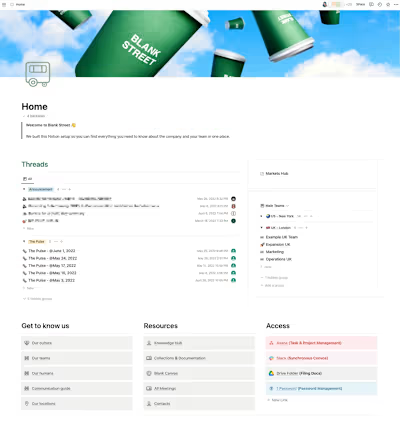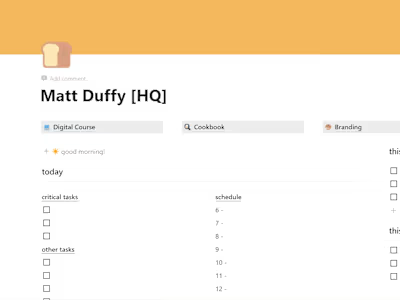I was the Facilitator for a Design Sprint
I was the Facilitator for a Design Sprint.
The Marketing team at Optemization, a Digital Ops and Notion consulting agency, was facing a big problem - they were not getting enough inbound leads that fit their Ideal Customer Profile (ICP).
To find a solution for this, I facilitated a Remote Design Sprint with a small team - the Fractional Chief Marketing Officer, one Marketing team member and one Notion Builder (Optemization's version of a Developer role).
Having recognized that the content published by the team was not generating the leads they desired, we started exploring why that might be, and realized that the Marketing processes and systems were not aligned with the team's overarching strategy. The team also lacked a tool to consistently keep track of Marketing tests and their results, not being able to apply any testing insights to their campaign planning and content production efforts.
To solve that, we built a prototype of a Marketing system within Notion.so that:
Ensures all content pieces published are connected to one of the team's strategy pillars.
Standardizes great campaign planning and content production practices.
Provides easy visualization of test results and insights, as they relate to content pieces, channels and campaigns.
As the Sprint's Facilitator, I closely followed the Remote Design Sprint process. This took 5 days, each with a different goal and outcome.
Day 1: Map
We started of by defining the team's goal for 2024:
"Have a clear strategy and set of tactics for marketing with guidelines and metrics to evaluate how well we are attracting our ideal ICP, getting inbound interest, and industry attention."
Keeping the goal in mind, we captured any questions we'd like to answer during the sprint, and interviewed experts that could give us insight into our problem and goal.
The main outcome of this day was a Map of our customers’ experience, from when they recognize they need help with their digital operations to when they reach out to Optemization's Sales team. This was then used to select which step in the Map was going to be our Target for the Sprint - the moment our customers find relevant content from us.
Day 2: Sketch
On this day, we gathered inspiration from multiple sources, and sketched a few possible solutions to our problem.
Day 3: Decide
After reviewing each others’ sketches, the team voted on each drawing's best features and the Sprint's Decider selected two similar options for us to merge into a prototype on day 4.
We understood that to consistently create content relevant to the ICP, the Marketing team must first understand what our customers find relevant through campaign planning and marketing testing. Since there was no way to keep track of either of these in their systems, that's what we were going to prototype.
Day 4: Prototype
It's finally time to build a product - on day 4, I met with the Notion Builder participating in the Sprint to collaborate on the prototype. We diagramed it in the FigJam board, and then proceeded to build it out in Notion with minimalistic looks and complex functionality. The prototype ensures every content piece produced by the team is tied to a Campaign, which in turn is tied to a Growth Pillar, which is part of the larger 2024 Strategy doc. The goal is to keep the team aligned all throughout the year.
Day 5: Test
Testing an internal prototype with such a small team was hard - we couldn't get the 5 people recommended in the Design Sprint method, because the Growth team was smaller than that. So instead we interviewed one Growth team member and adjacent teams' members as well - one from Sales, and Tem, the CEO.
This gave us interesting results: we learned what mattered to each of the external team members as it relates to Growth, and how we could improve it. However, the most exciting insights came from the interview with the Growth team member - from her interview, the highlighted learnings were that:
some things were missing from the prototype, like a Wiki for resources and a Sources database of links and publications to reference in content production;
the Metrics database needs improvement - Growth needs Metrics to be time-bound so the team can keep track of their changes over time;
there are multiple templates for content, campaigns and more that should be included in the system.
Final Thoughts
The Design Sprint was an intense process for all of those involved, but well worth the effort in terms of the results we got - a system that solved the Growth team's concerns.
Like this project
Posted Sep 14, 2024
In this role, I spent 5 days leading the team through several exercises to better understand their needs and pain points as it related to their digital systems.
Likes
0
Views
4





